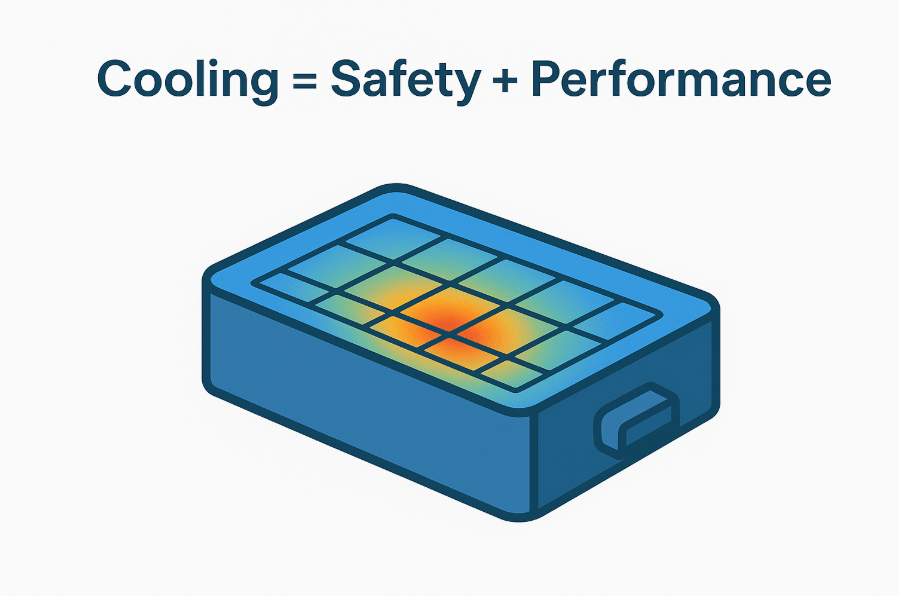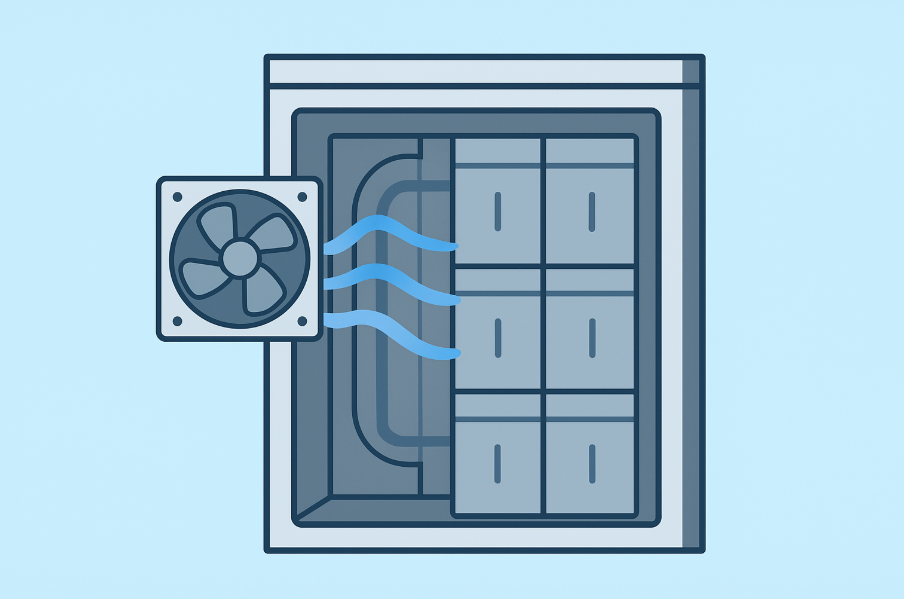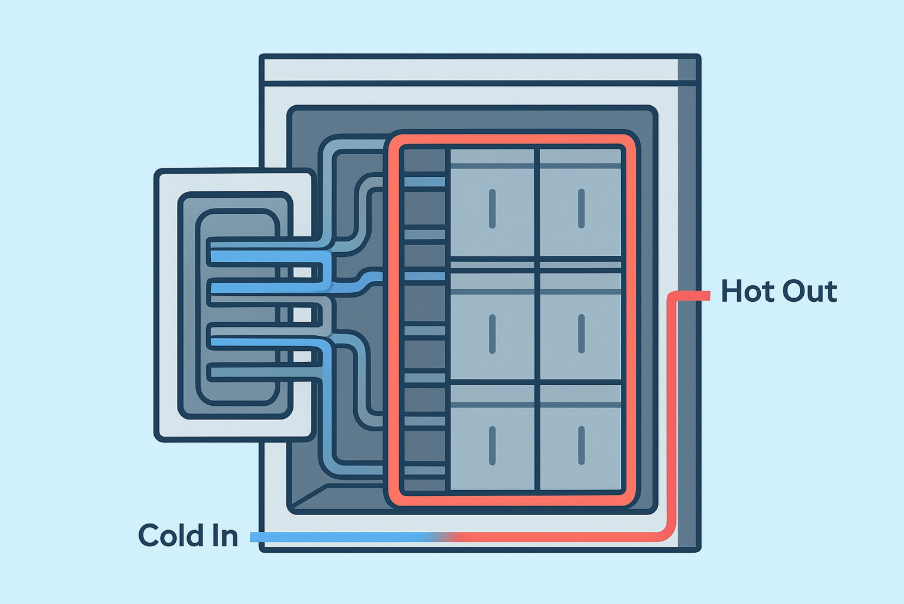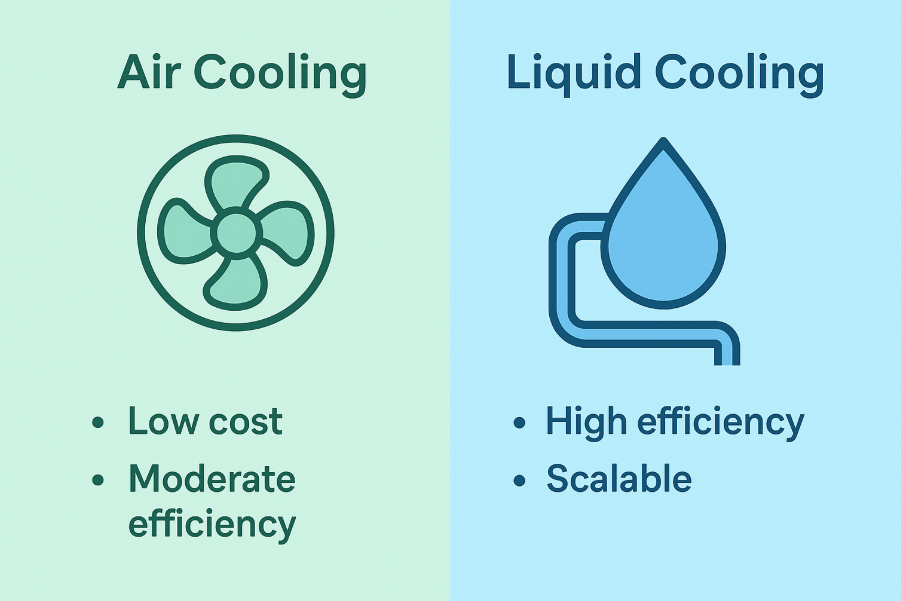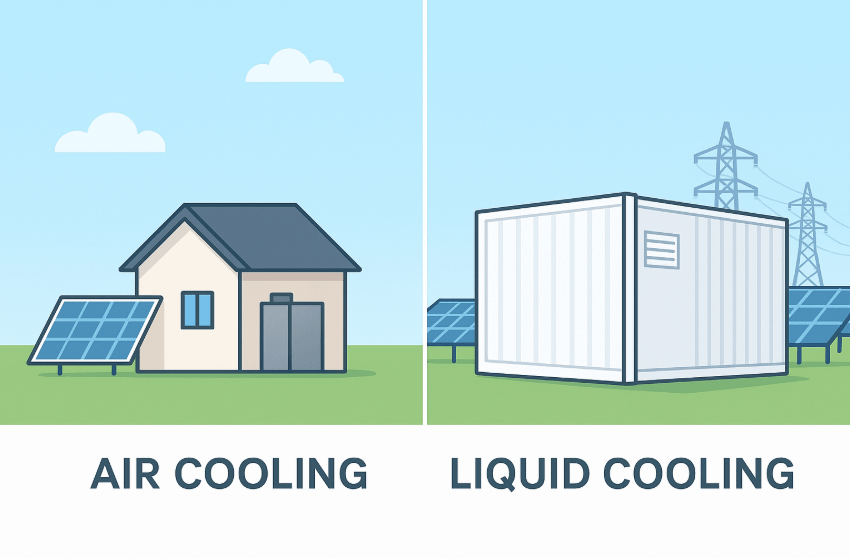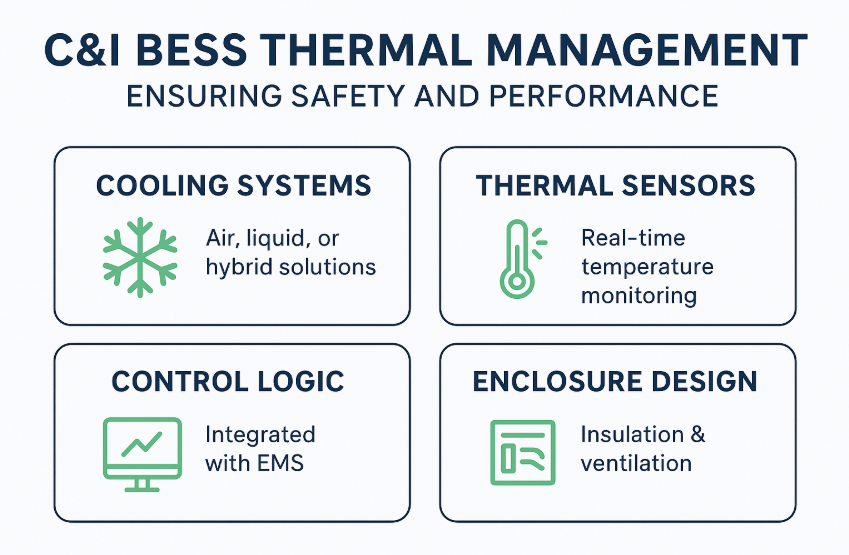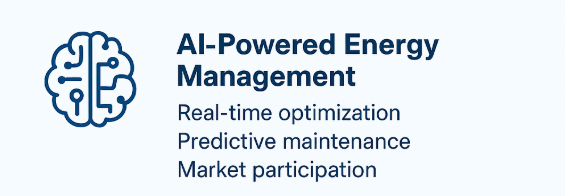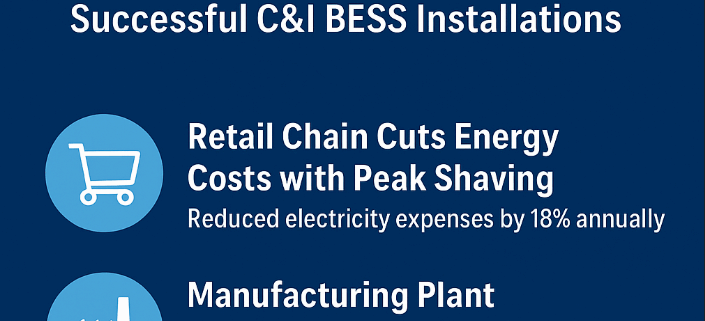UL 9540A Test Method: The Ultimate Guide for Battery Energy Storage Safety
UL 9540A Test Method: Battery Energy Storage Systems (BESS) are growing rapidly as renewable energy, electric vehicles, and grid-scale projects expand worldwide. While storage technology brings efficiency and sustainability, it also raises safety challenges—especially related to thermal runaway and fire propagation.
This is where the UL 9540A Test Method plays a vital role. It is the most widely accepted safety test for energy storage systems, referenced by codes such as NFPA 855 and the International Fire Code.
In this guide, we’ll explain:
- What UL 9540A is
- The four levels of testing
- How it relates to UL 9540 and UL 9540B
- The major 2025 updates
- Why manufacturers and project developers should care
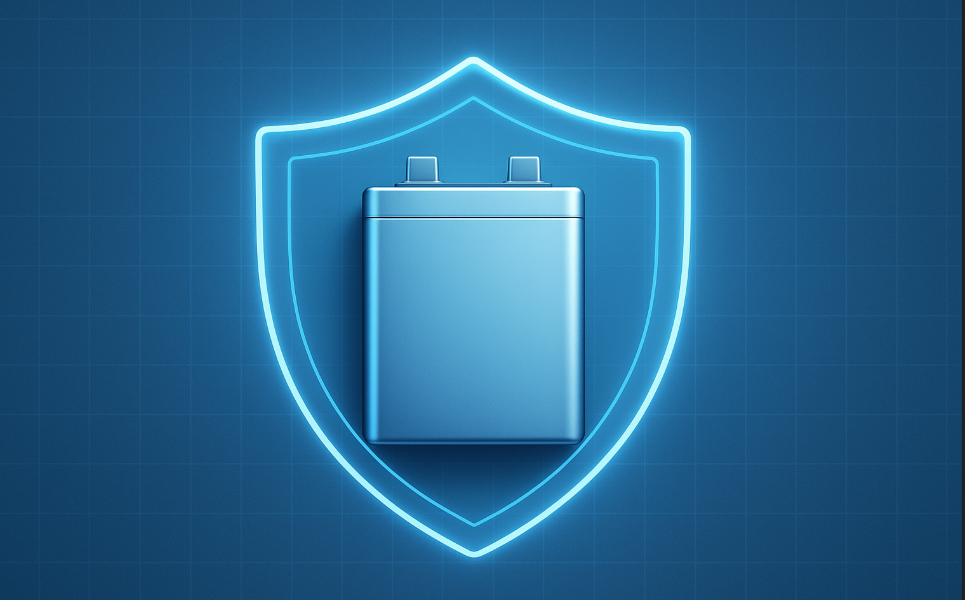
What is the UL 9540A Test Method?
The UL 9540A Test Method for Evaluating Thermal Runaway Fire Propagation in BESS is the only national standard designed to measure how battery systems react under thermal runaway conditions.
It answers critical safety questions such as:
- Will a single cell failure spread to neighboring cells?
- How will a battery module or system behave in case of fire?
- Can suppression systems prevent explosions, flames, or reignition?
Unlike general safety certifications, UL 9540A focuses only on fire propagation risks, making it the go-to test for engineers, installers, and regulators.
👉 Related: UL Certifications for Battery Systems
Why is UL 9540A Important for BESS?
Battery systems are often installed in homes, businesses, and utility-scale projects. If a fire starts and spreads, it can have devastating consequences. UL 9540A ensures that:
- Manufacturers can prove their systems are safe.
- Installers get clear installation requirements, such as spacing and suppression.
- Authorities have a reliable, consensus-based safety test.
It is directly referenced in NFPA 855, which governs the installation of stationary energy storage systems, making it essential for compliance.
👉 Explore more: CE for BESS: Complete Guide
The Four Levels of UL 9540A Testing
UL 9540A follows a hierarchical four-level structure. Testing may stop early if performance criteria are met.
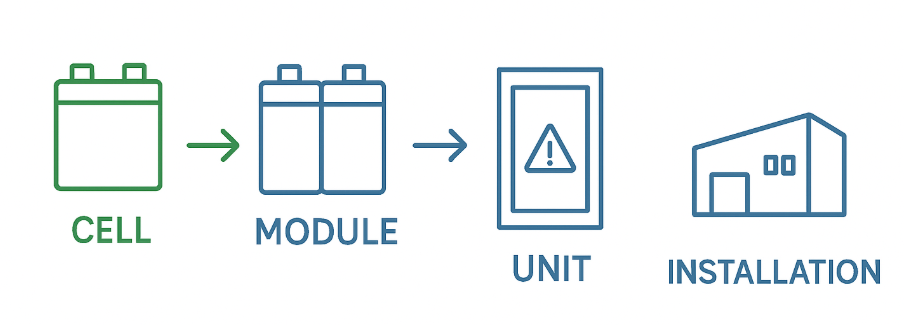
1. Cell-Level Testing
The test begins with individual cells. The goal is to induce thermal runaway and analyze gas emissions, flames, and heat release.
- If cells show no propagation risk, testing can stop here.
2. Module-Level Testing
If cell risks exist, groups of cells (modules) are tested. This step checks whether failures propagate across the module, creating larger hazards.
3. Unit-Level Testing
The full battery system (ESS unit) is tested. Suppression systems are often disabled unless they are built-in. Engineers assess:
- Flame spread
- Explosion risk
- Gas emissions
4. Installation-Level Testing
The final stage evaluates the system in real-world conditions with fire suppression included. It ensures:
- No detonation or deflagration
- Effective fire suppression
- No reignition after the event
👉 Related: What is BESS?
UL 9540A vs. UL 9540 and UL 9540B
It’s easy to confuse these standards, but they serve different purposes:
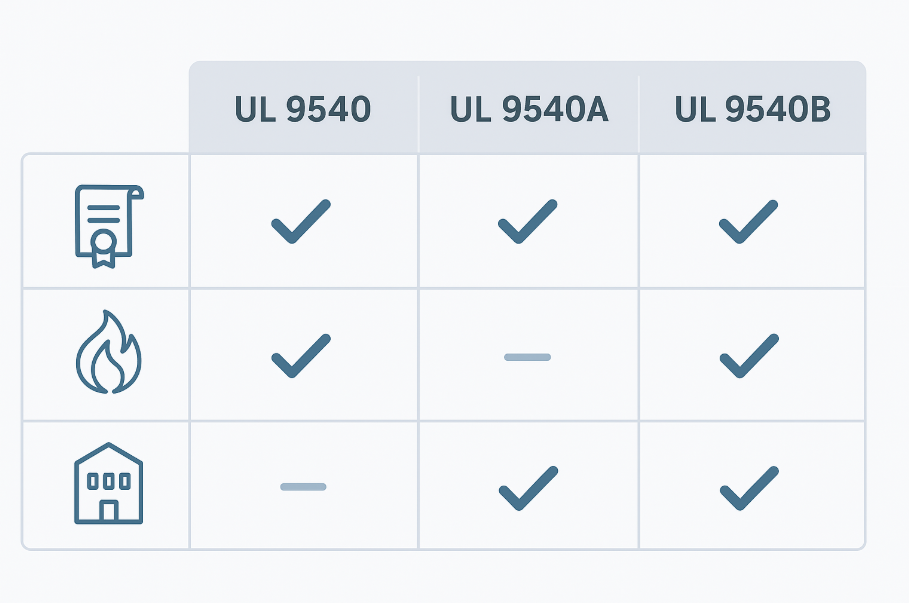
- UL 9540: Certification standard for energy storage equipment. Covers overall safety, performance, and compliance.
- UL 9540A: Test method for fire propagation in thermal runaway scenarios. Supports UL 9540 certification.
- UL 9540B: Designed specifically for residential-scale BESS, focusing on large-scale fire tests and vent gas ignition.
Together, these standards provide a complete safety framework for energy storage systems.
2025 Updates: What Changed in UL 9540A Fifth Edition?
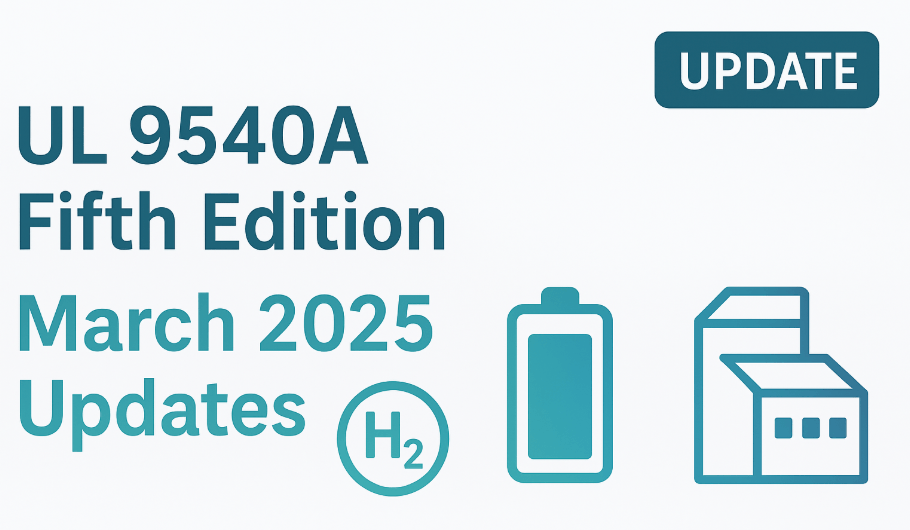
The fifth edition of UL 9540A, released on March 12, 2025, brings significant improvements to reflect evolving technology and chemistries.
Key Updates:
- Optional hydrogen detection and heat flux measurements.
- Clarified rest times after conditioning/charging.
- Replacement of NFPA 286 fire room with an instrumented wall for residential testing.
- More precise thermocouple placement and continuous ramping in cell tests.
- Specific temperature limits for module casings.
- Extended protocols for new chemistries like lead-acid, NiCd, and flow batteries.
- Added requirements for rooftop and open garage installations.
These updates make UL 9540A more adaptable, helping manufacturers meet stricter fire codes and regulators enforce safer installations.
👉 Related: Green Hydrogen Storage
Who Needs UL 9540A Testing?
UL 9540A applies to:
- Battery manufacturers – proving technology safety.
- BESS integrators – ensuring compliance with NFPA 855 and local fire codes.
- Developers and EPCs – gaining project approvals faster.
- Home and commercial installers – understanding spacing and suppression requirements.
Without UL 9540A testing, it becomes nearly impossible to get approval for large BESS installations in the U.S.
Benefits of UL 9540A Testing
- Compliance: Meets NFPA 855 and IFC requirements.
- Design Optimization: Provides data for safe spacing and fire suppression.
- Market Access: Required for many U.S. and Canadian projects.
- Risk Reduction: Lowers fire and explosion risks in installations.
Conclusion
The UL 9540A Test Method is the backbone of energy storage safety in 2025. With its updated fifth edition, it provides a clear, science-based framework to evaluate thermal runaway risks at cell, module, unit, and installation levels.
For manufacturers, passing UL9540A testing means faster certifications, safer designs, and wider market acceptance. For regulators and installers, it provides confidence that battery energy storage systems meet the highest safety standards.
As BESS technology evolves, UL 9540A will continue to be the key standard shaping how we store renewable energy safely and effectively.
👉 Learn more: UL Certifications for Battery Systems
FAQs: UL 9540A Test Method
Q1. What is the UL 9540A Test Method?
The UL 9540A Test Method is a fire safety test designed to evaluate the thermal runaway characteristics of battery energy storage systems (BESS). It helps manufacturers and system designers understand how a battery reacts under stress, including fire, gas release, and propagation risks.
Q3. How does UL 9540A differ from UL 9540 certification?
UL 9540 is a system-level certification for battery energy storage systems, while UL 9540A is a fire test method. UL 9540A is often used to provide supporting safety data required to achieve UL 9540 certification or to meet local fire codes.
Q2. Why is UL 9540A testing important for energy storage systems?
UL 9540A testing provides critical data for fire safety, helping system integrators, regulators, and building authorities approve energy storage projects. It ensures that batteries are safe for use in residential, commercial, and grid-scale installations.
Q4. What are the levels of UL 9540A testing?
UL 9540A includes four test levels:
- Cell level – Tests how a single cell behaves in thermal runaway.
- Module level – Examines propagation within a battery module.
- Unit level – Assesses fire and gas risks in the entire system.
- Installation level – Evaluates safety in a real-world installed environment.
For more details on BESS safety, see our guide on energy storage PCS.
Q5. Who requires UL 9540A testing?
UL 9540A testing is often required by:
- Battery manufacturers seeking UL 9540 certification.
- System integrators installing BESS in commercial or residential sites.
- Authorities Having Jurisdiction (AHJs) and fire marshals reviewing projects.
Learn more about BESS certifications required glo
Q6. What are the latest updates in UL 9540A (Fifth Edition, 2025)?
The March 2025 update to UL 9540A (5th Edition) added requirements for:
- Hydrogen detection sensors.
- Module casing integrity.
- Testing for rooftop energy storage systems.
Check our post on battery regulations in the EU for related compliance u
Q7. Does passing UL 9540A mean a battery is certified?
No, UL 9540A is not a certification. It is a test method that provides data used to achieve UL 9540 certification or to comply with fire codes. Certification comes from successfully meeting UL 9540 requirements.
Q8. How long does UL 9540A testing take?
The duration depends on system size and complexity. A full series of tests (cell, module, unit, installation) can take several weeks to months, depending on scheduling and regulatory requirements.
Q9. Can UL 9540A testing be skipped if a battery is already safe?
No. Even if a system has proven safety records, AHJs and certification bodies often require UL 9540A data as part of the approval process, especially for large-scale installations.
Q10. How does UL 9540A testing impact project approval timelines?
Providing UL 9540A data often accelerates permitting and approval by demonstrating compliance with NFPA 855, IFC, and local fire codes. Without it, projects may face delays or additional scrutiny.



